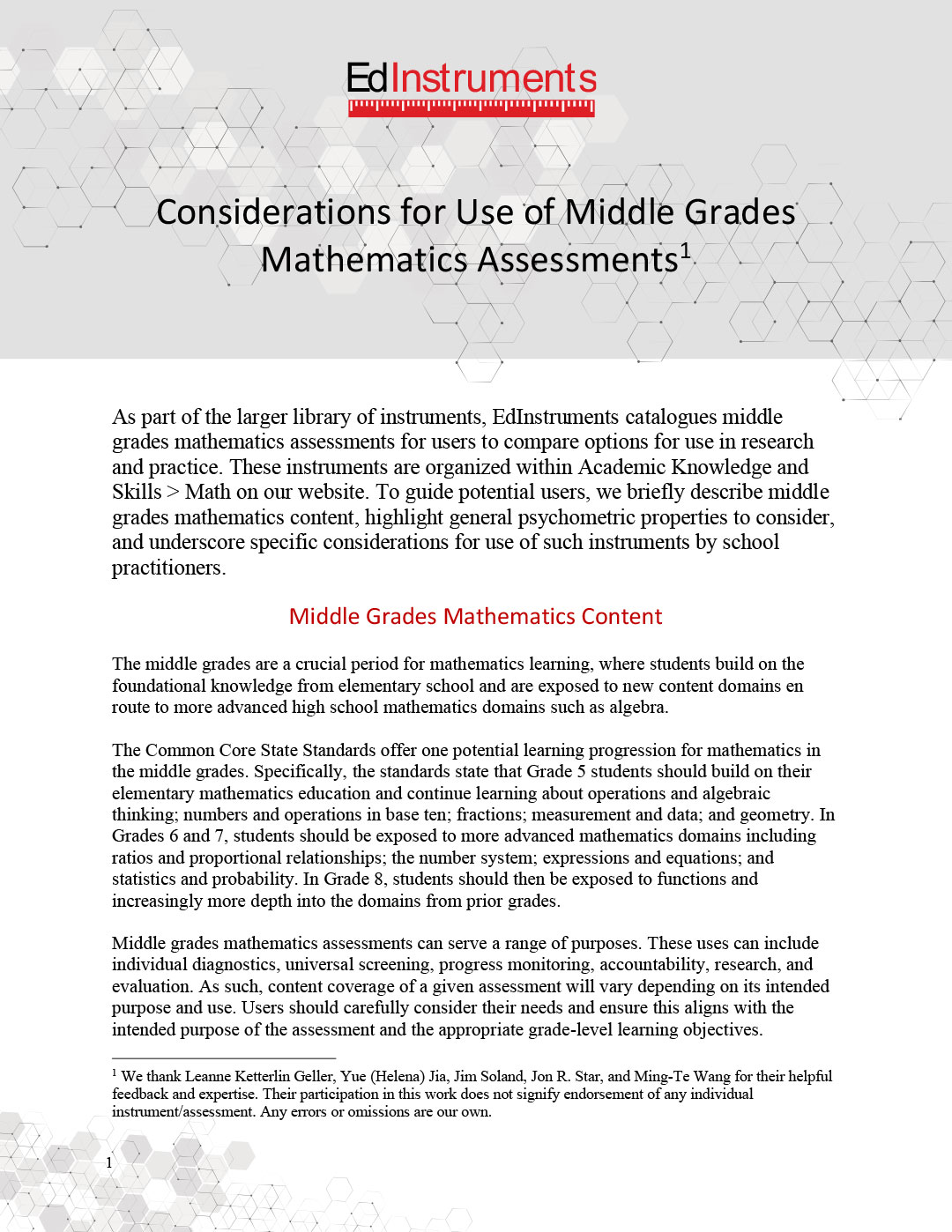
As part of the larger library of instruments, EdInstruments catalogues middle grades mathematics assessments for users to compare options for use in research and practice. These instruments are organized within Academic Knowledge and Skills > Math on our website. To guide potential users, we briefly describe middle grades mathematics content, highlight general psychometric properties to consider, and underscore specific considerations for use of such instruments by school practitioners.
Middle Grades Mathematics Content
The middle grades are a crucial period for mathematics learning, where students build on the foundational knowledge from elementary school and are exposed to new content domains en route to more advanced high school mathematics domains such as algebra.
The Common Core State Standards offer one potential learning progression for mathematics in the middle grades. Specifically, the standards state that Grade 5 students should build on their elementary mathematics education and continue learning about operations and algebraic thinking; numbers and operations in base ten; fractions; measurement and data; and geometry. In Grades 6 and 7, students should be exposed to more advanced mathematics domains including ratios and proportional relationships; the number system; expressions and equations; and statistics and probability. In Grade 8, students should then be exposed to functions and increasingly more depth into the domains from prior grades.
Middle grades mathematics assessments can serve a range of purposes. These uses can include individual diagnostics, universal screening, progress monitoring, accountability, research, and evaluation. As such, content coverage of a given assessment will vary depending on its intended purpose and use. Users should carefully consider their needs and ensure this aligns with the intended purpose of the assessment and the appropriate grade-level learning objectives.